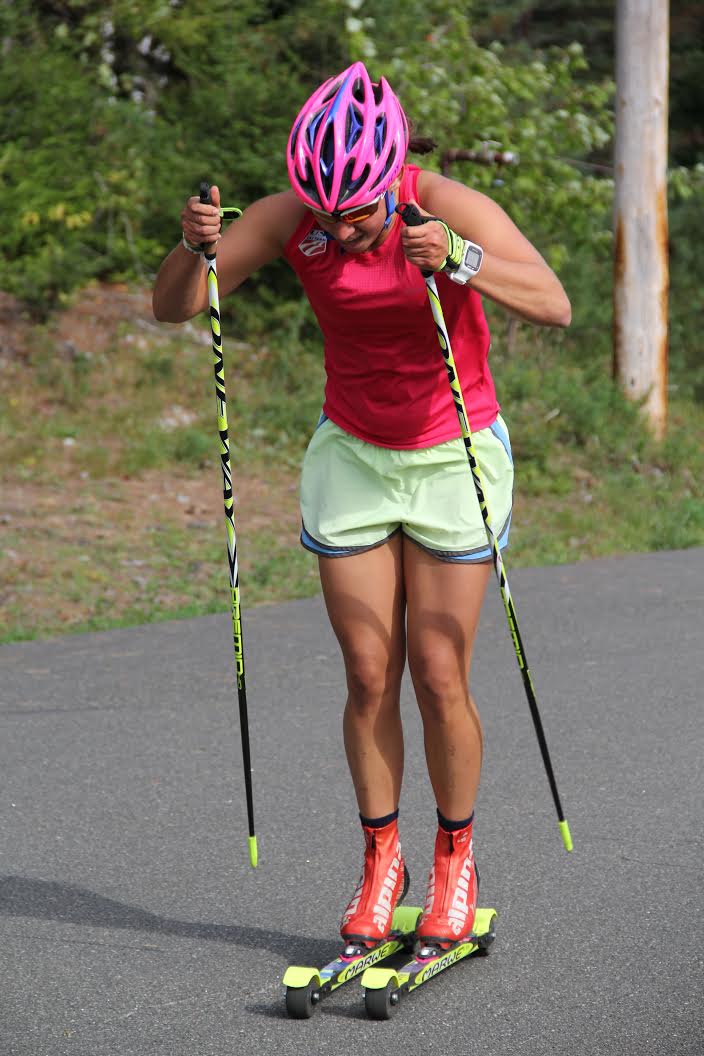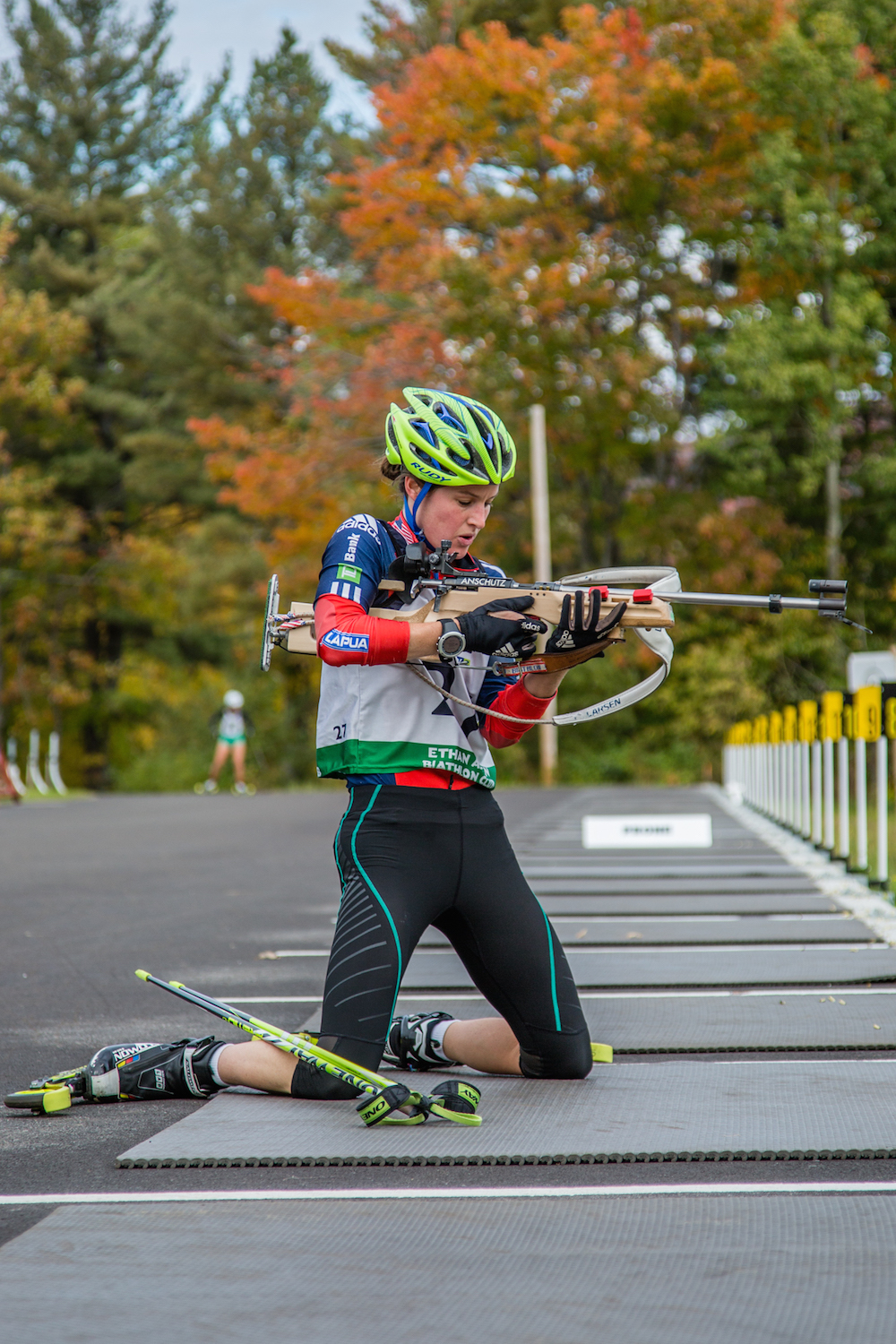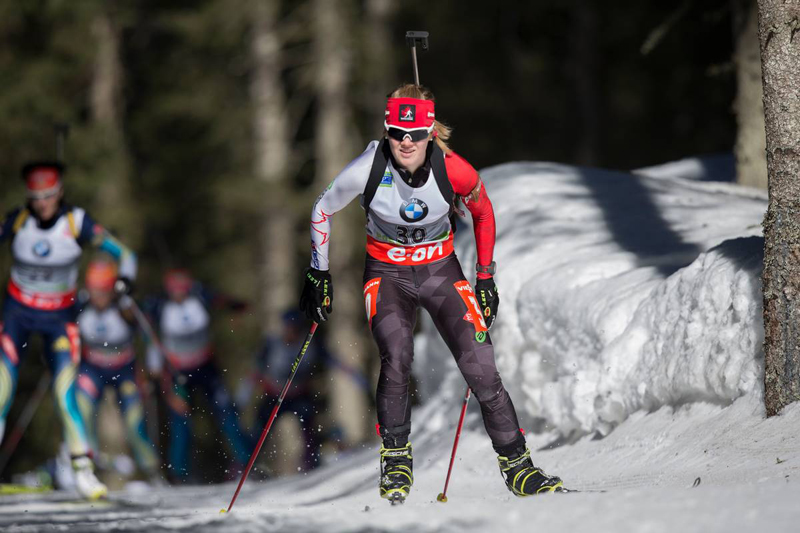
Getting named to the national team is a big deal, to be celebrated with family, friends, supporters, and sponsors.
Then what?
“It is a dream come true to call all of the girls on the team my teammates because they have been the athletes I have always looked up to and still look up to today, so having the opportunity to train and learn from them is incredible!” Julia Kern, a first-year member of the United States Ski Team (USST) told FasterSkier in an email.
So is it all euphoria? Is the transition tough?
After having surgery for compartment syndrome this spring, Kern was out of normal dryland training for a while. She immediately reaped the rewards of her naming by using USST resources to help with her recovery.
“I actually headed out to Park City for rehab for 6 weeks,” wrote the recent high school graduate. “Between the equipment, physical therapists, strength coaches, ski coaches, and the facilities, the Center of Excellence was the best place ever to rehab from surgery! With that, it was really cool to meet athletes from different sports and become familiar with the USSA headquarters.”

For Kern, the national team naming (she and Katharine Ogden were both named to the “D” team) was maybe not even the biggest change in her training year. She joined the Stratton Mountain School program and is taking a semester off, which means that for the first time she isn’t focusing on school work.
“My training is also quite a bit different than in high school, since I have more time now,” she wrote. “Even though many things have changed over the past few months, I would say it was pretty smooth and easy transition into SMS and the USST since they work really well together.”
Another smooth transition came to Clare Egan, a Craftsbury , Vermont-based biathlete who moved up from U.S. Biathlon’s “X” team last year to the senior national team this season.
“Overall I would say that my transition to the biathlon national team has been very smooth, as a result of the well-thought out institutional structure created by Bernd Eisenbichler, our Chief of Sport,” she wrote in an email. “The professionalism of the whole organization allows me to focus on my job as an athlete.”
Starting with the Development Group before moving onto the “X” team, which is U.S. Biathlon’s elite development squad, provided Egan with something perhaps similar to what Kern is experiencing.
“The Development Group [was] in some ways to the US Nordic team’s National Training Group,” Egan explained. “The national team coaches offered to write a biathlon-specific training plan for me and invited me to Lake Placid for camps throughout the summer. When I was not in Lake Placid I followed the training plan on my own in Craftsbury, often with Susan Dunklee and/or in coordination with other GRP skiers, and checked in with the national team coaches as often as needed.”

Like Stratton for skiing, Craftsbury has a strong affiliation with U.S. Biathlon, with both Susan Dunklee and Hannah Dreissigacker claiming affiliation before or during their national team tenures and athletes from the club representing the country in international junior and senior competition as well. That doesn’t mean that everything translates one-to-one, but at least there’s a template for athletes moving between the two locations.
When Egan moved onto the senior national team this year, she was already with the national team staff both from her training the previous season, and stints on the World Cup and at World Championships in 2014-2015.
“This year, as a member of the A-Team, the biggest difference is that I work primarily with Jonne Kahkonen, the head women’s coach,” Egan wrote. “However, all the US Biathlon staff work closely together and there is fluidity among the different team levels, so I train alongside A-team and X-team members every day and work with all the different coaches.”
For two relatively new members of Canada’s biathlon team, settling in to the routine of national team life and getting used to the inner workings comes along with more responsibility and bigger training loads.
“I would say that my expectations have changed,” wrote Macx Davies, a third-year member of the team. “I now know it will be challenging and how I best cope with everything, but I would never say it is easier the third time, because with every year comes an increase in training volume and intensity and we made a big jump in hours for the Park City camp compared to the last two years.”
Emma Lunder is going through a similar transition in her second year on the team.
“The biggest change is that this year I’m actually training full-time with them, whereas last year I was still a member of the Biathlon Alberta Training Centre, and only attended the national team training camps,” she wrote. “It’s been a relatively easy transition to the team… but it definitely took a bit of getting used to going from being one of the most senior athletes on BATC to one of the ‘younger girls’ on the national team.”

Lunder is focusing on increasing the intensity this season, which is a change from her training the previous seasons.
“I’m still feeling really motivated by how I ended the season at the IBU Cups in Canmore last March, and am pretty pumped to get racing again,” wrote Lunder, who took second place in one of the international races her home venue hosted. “We have a few trials races to decided World Cup and IBU Cup teams near the end of November, but for now I’m still focusing on the day-to-day work.”
That focus can be intense.
“Compared to the first year I am doing significantly more training and have started to criticize myself more harshly at what I need to change to continue improving my performance,” wrote Davies. “This year has had a big focus on ski technique and also shooting consistency. I’m optimistic they will be greatly improved going into the season.”
And with the added intensity comes rewards. After the team’s recent camp in Park City, Davies took the opportunity to have some vacation time with teammate Nathan Smith, who is seven years older and a World Championships silver medalist.
“I think that if I’m already down in Utah I may as well spend our rest week exploring some of the nearby states,” Davies wrote. “This year I decided for San Francisco and exploring the Lake Tahoe area, as well as Yosemite National Park. Overall it was a very fun and relaxing trip and eastern California is a beautiful place!”
So that’s what Kern and her teammate Ogden have to look forward to in her next season – or seasons – with the U.S. Ski Team.
And Kern couldn’t have a more positive attitude. Far from being nervous about being one of the youngest members of the team, she embraces it.
“I really love training with the team and learning from the older athletes,” Kern wrote. “I am used to being the youngest wherever I go, so being much younger than everyone else does not bother me; I also have Katharine to team up with as the ‘babies’ of the team.”
Chelsea Little
Chelsea Little is FasterSkier's Editor-At-Large. A former racer at Ford Sayre, Dartmouth College and the Craftsbury Green Racing Project, she is a PhD candidate in aquatic ecology in the @Altermatt_lab at Eawag, the Swiss Federal Institute of Aquatic Science and Technology in Zurich, Switzerland. You can follow her on twitter @ChelskiLittle.



